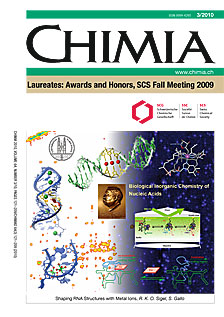From Relative to Absolute Quantification of Tryptic Peptides with Tandem Mass Tags: Application to Cerebrospinal Fluid
DOI:
https://doi.org/10.2533/chimia.2010.132Keywords:
Brain disorders, Cerebrospinal fluid, Mass spectrometry, Proteomics, QuantificationAbstract
Quantification is a major task in proteomics. Among the different analytical strategies to enable peptide and protein quantification, tagging with isotopic labels has emerged as a practical, versatile, and efficient alternative. In particular, isobaric labels, such as TMT or iTRAQ, are now widely employed to make relative comparison of the protein amounts in separate biological samples with tandem mass spectrometry (MS/MS). We used herein a shotgun proteomic approach based on labelling with tandem mass tags (TMTs) for the relative quantification of proteins, and the absolute quantification of their tryptic peptides in human cerebrospinal fluid (CSF). First, the comparison of ante- and post-mortem CSF samples was carried out for the discovery of protein marker candidates of brain-damage disorders. Second, tryptic peptides representative of these candidates were measured in CSF using reporter-ion calibration curves. These works highlighted the advantages and limitations of such strategies for quantification purposes in proteomics.Downloads
Published
2010-03-31
Issue
Section
Scientific Articles
License
Copyright (c) 2010 Swiss Chemical Society

This work is licensed under a Creative Commons Attribution-NonCommercial 4.0 International License.
How to Cite
[1]
L. Dayon, N. Turck, A. Scherl, D. F. Hochstrasser, P. R. Burkhard, J.-C. Sanchez, Chimia 2010, 64, 132, DOI: 10.2533/chimia.2010.132.







